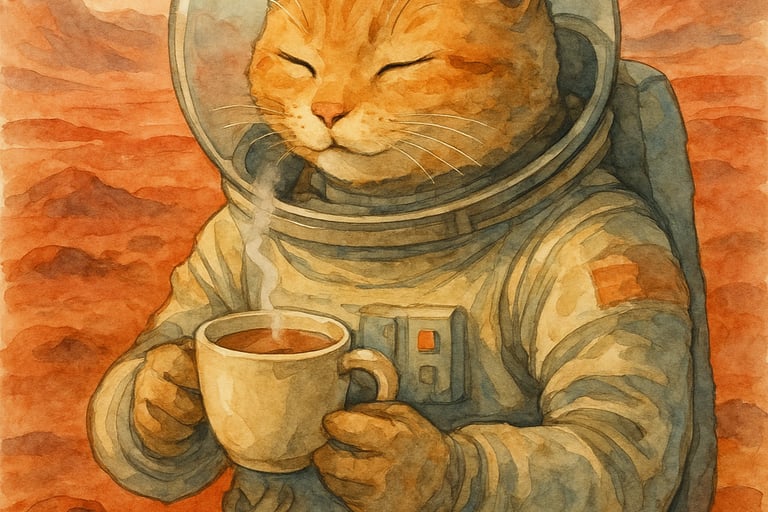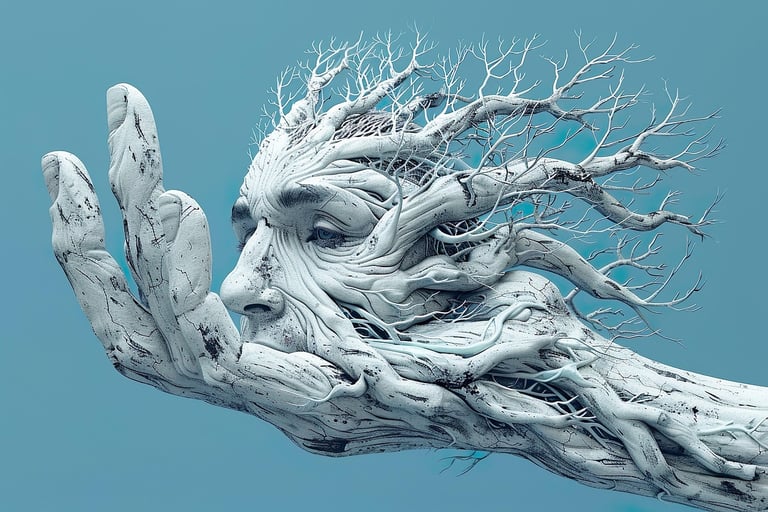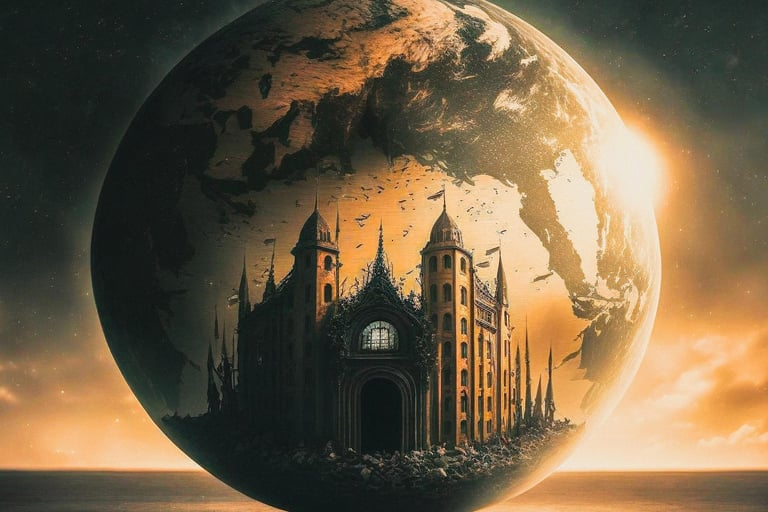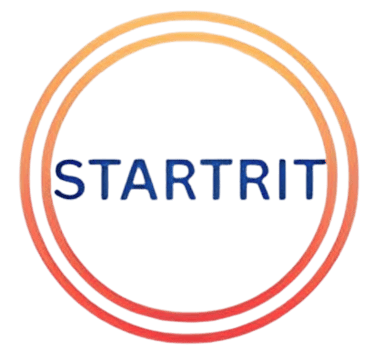How AI Image Generation Works (and Why Everyone’s Turning Their Pics into Ghibli Characters)
Discover how AI image generation tools like Midjourney, GPT-4o, and Reve turn text prompts into stunning visuals — including the viral trend of Ghibli-style portraits. Learn how it works and why it’s taking over social media.
Venkata Ram C. R.
5/10/20253 min read


Ever wondered how your best friend suddenly turned into a dreamy Ghibli-style portrait or how brands are cooking up wild ad visuals without ever touching Photoshop? Welcome to the world of AI image generation — where your imagination meets machine-powered magic.
You can literally type a prompt like “a cat astronaut sipping chai on Mars in watercolour style”, and boom, the AI turns your words into visuals. No paintbrush, no graphic design degree. Just the power of text-to-image AI models like Midjourney, GPT-4o, and Stable Diffusion.
So… what is AI image generation?
In simple terms, AI-generated art means using machines to create images from text. You could say “a neon-lit alley in Tokyo with flying cars,” and the AI brings it to life. This magic happens through diffusion models trained on billions of images and their captions.
Think of it like raising a super-smart kid by showing them every meme, painting, anime, and photograph ever made — then asking them to create something new. That’s what machine learning image tools are doing at scale.




Final thoughts: Why it all matters
In a world where your cat can become a DJ, and your selfie can be turned into a Pixar-style portrait, anything is possible. You don’t need design software or drawing skills — just your imagination and the right AI tool.
So go ahead, type something wild like “a dragon in a business suit eating ramen in Times Square” into your favorite AI art tool. Whether you're using it for fun or business, the future of image creation is in your hands.
The tools that are changing the game
Here’s a quick rundown of popular AI art tools everyone’s using:
Midjourney – Great for fantasy art, concept visuals, and breathtaking styles.
GPT-4o (via ChatGPT) – Super interactive. You can chat and tweak your image in real-time. Want a cat holding a sword instead of a coffee cup? Just ask.
Stable Diffusion – An open-source AI image generator beloved by developers for its flexibility.
Reve – Extremely prompt-accurate. Ask for a disco-ball jungle and it’ll deliver.
Ideogram – Fantastic for images that include text, like logos and posters.
Canva AI and Adobe Firefly – Ideal for high-resolution marketing visuals and polished social content.
These AI-powered tools for visual content creation are used everywhere — from social media to branding to product mockups.
Are AI-generated images replacing artists?
Not quite. AI image generation is more like a supercharged brush. Just like a camera didn’t kill painting, these tools won’t replace artists — they enhance digital creativity.
That said, the line between tech and talent is getting thinner. Filmmakers prototype scenes, marketers create campaign visuals, and even medical researchers use AI to improve imaging. This blend of technology and creativity is reshaping how we work and imagine.
How does this tech even work?
Most AI image generators use a process called diffusion. Imagine starting with pure noise, like static on a broken TV, and gradually shaping that into a coherent image — guided entirely by your prompt.
Here’s how it goes:
You type something like “a futuristic city underwater in Pixar style.”
The AI processes this using natural language processing (NLP).
It converts the text into numerical data and finds visual patterns it’s been trained on.
Finally, it “paints” — one pixel at a time — from chaos into clarity.
It’s like sculpting from fog. That’s the beauty of AI-powered photo transformation tools.
Let’s talk Ghibli-fication
Now for the fun part: Studio Ghibli AI art. The Ghibli-fication trend is lighting up the internet. With tools like GPT-4o, Midjourney, and Reve, you can turn your selfie into something that looks straight out of Spirited Away or My Neighbor Totoro.
People use prompts like “my portrait in Spirited Away art style,” and these tools adapt your facial features, background, and colors to create that dreamy, nostalgic Ghibli vibe.
These AI tools for creating Ghibli-style portraits weren’t trained on just one art style — they’ve seen thousands. So whether it’s anime, surrealism, cyberpunk, or oil painting, they remix it effortlessly.


